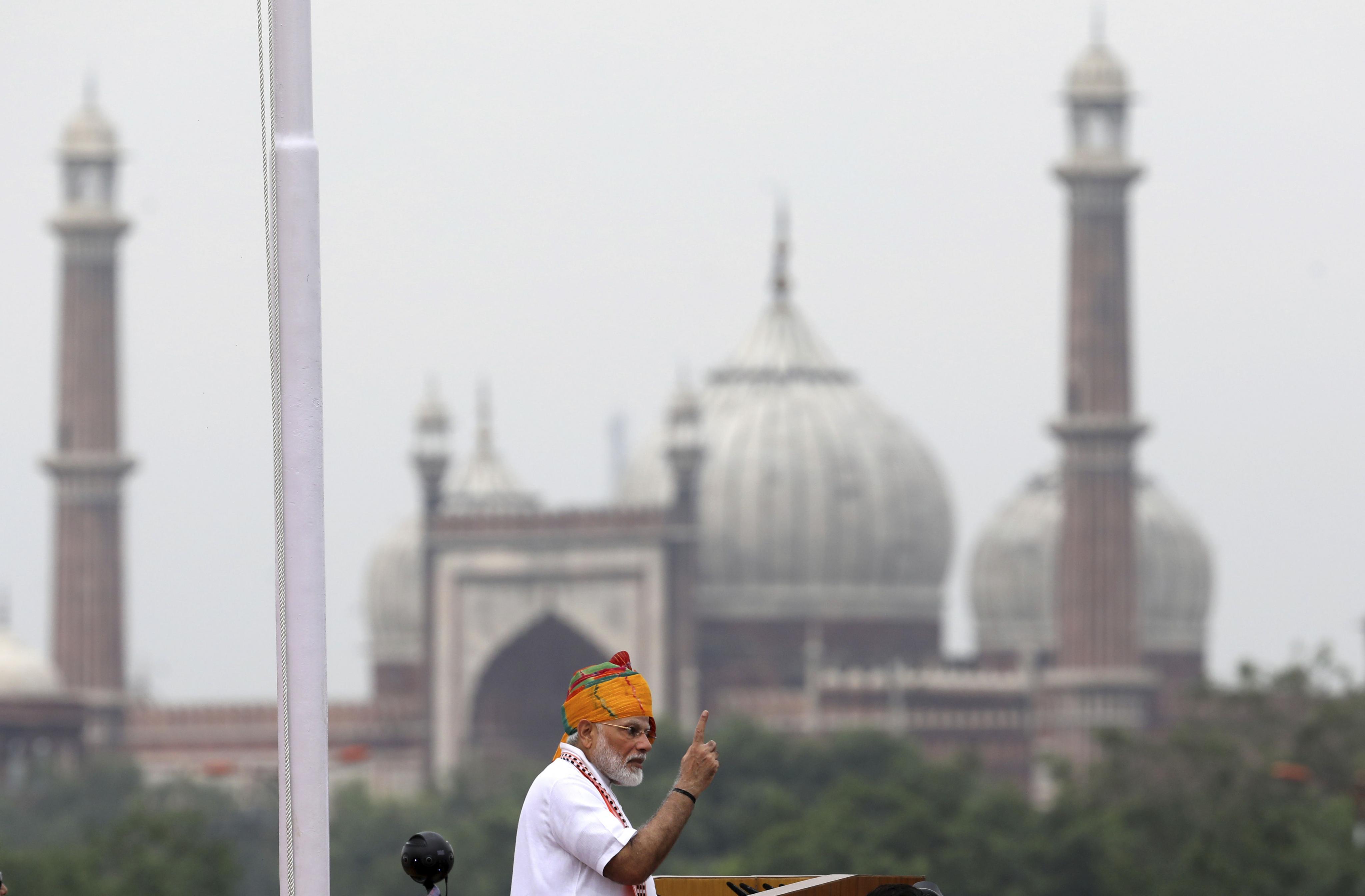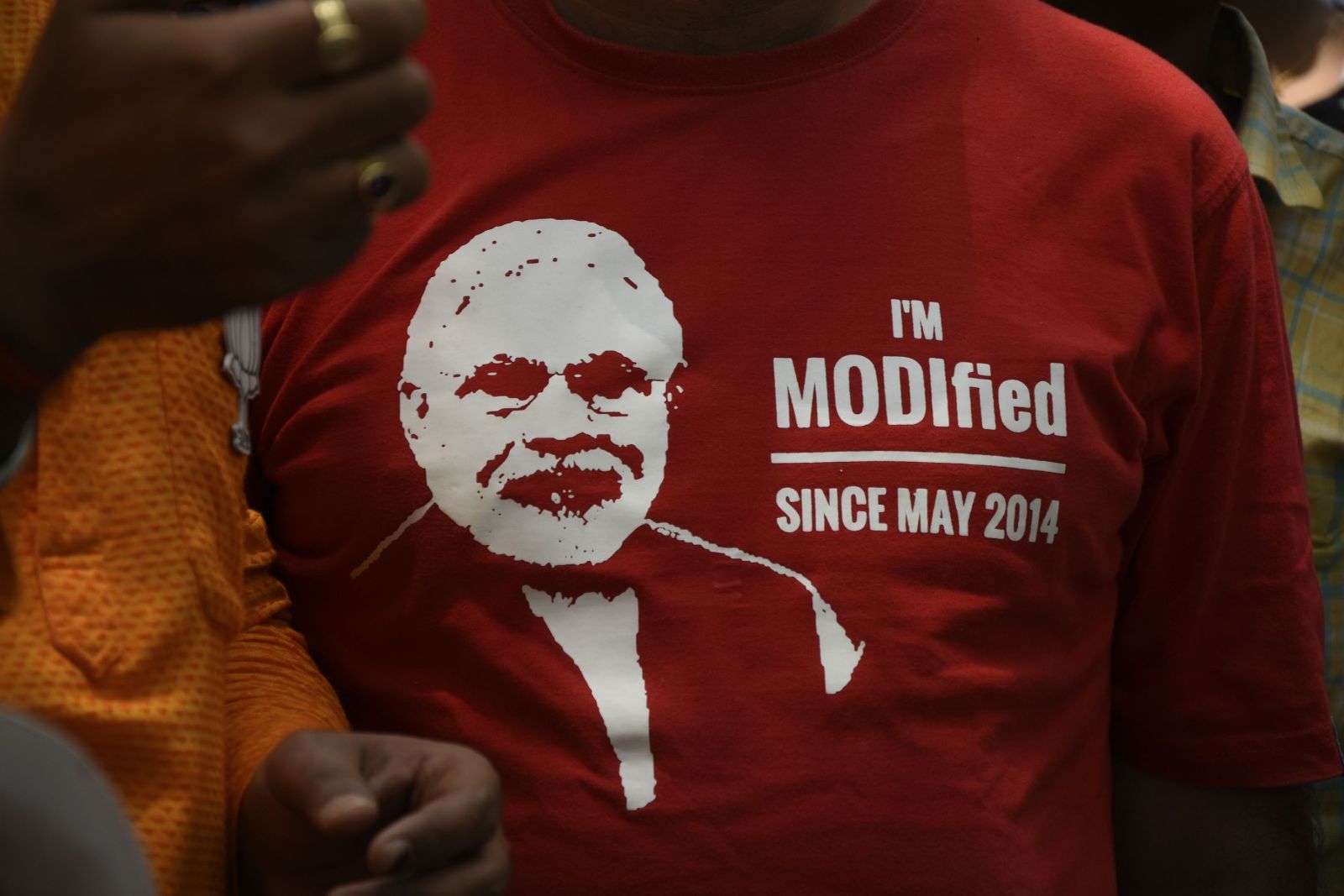Beyond world-denial
[ By Martin Kämpchen ]
What has religion to do with development? Do they not belong in different spheres? Development refers to the material progress of human society, whereas religion seeks spiritual well-being through transcendental truths and faith in redemption. Or so it seems at first glance.
But a closer look reveals that, unless it goes along with non-material values such as democracy, human dignity and honesty, material progress is no real progress at all. At most, it benefits only a segment of society. Materialism alone won’t do, as became evident when communism collapsed. As soon as we discuss spiritual values or humanism, however, the sphere of religion is not far away.
Even without transcendental re-assurance, democracy and human dignity are probably a viable basis for a society. But humanism and transcendence are so close that they often overlap, and they surely benefit from one another without anyone noticing.
That is particularly so in India. Decades of personal experience have taught me that Indians of all religious persuasions are born into a social environment, in which it is very difficult not to at least consider transcendence. Intuitively or instinctively, subconsciously or consciously, in a mix with magic or astrology, connected to esoteric traditions or social activism, all Indians somehow embrace transcendence.
There have indeed been counter-movements. The ancient Indian Charvaka philosophy strived to base social and personal norms on strictly rational foundations. In present-day India, powerful political parties explicitly espouse atheism – the Communists in West Bengal and Kerala, for example, and the Dravidian parties in Tamil Nadu do so.
“No one is an atheist”
That said, Charvaka is not one of the generally accepted canonic philosophies. It is an unorthodox side-shoot, a curiosity even. And many religious rituals have crept into the daily affairs of political parties in West Bengal, Kerala and Tamil Nadu. Atheism seems so alien to India that Mahatma Gandhi was able to bluntly assert that there was no such thing as an atheist. In his view, atheism was a mere pose.
It has often been stated that religion remains a fundamental aspect of Indian life because India historically never underwent a phase like the European Enlightenment. The reduction of religious ideas and practices to what is “reasonable” – to what serves society’s progress, in other words – polarised European thought in the Age of the Enlightenment. Nothing of that kind occurred in India.
Foreign religious thought, however, has certainly left its mark on Hindu teachings and practices. That was the case for Islam in the wake of the Muslim conquest and Christianity thanks to missionaries and colonisers. Contact with Europe helped identify, and sometimes reverse, distructive practices (such as the burning of widows). In general, however, foreign influences were absorbed and “hinduised” by integration into existing paradigms and beliefs, substantially transforming them in the process.
Religious views and practices define Indian culture in many ways. Classical Hinduism, however, does not interfere in what we call the material world. Fundamentally, Hinduism is a world-denying faith. “God” (brahman) and the “World” are mutually exclusive opposites. People must decide whether they wish to seek “God” or pursue a worldly life. If they chose God, they must turn their backs on worldly affairs, and devote themselves – separated from family and society – to the pious ascetic quest of “experiencing” God, and submerging into the divine sphere.
In classical Hinduism, nothing is real and true except God. Society and personal needs, indeed the entire phenomenal world, are considered an illusion (maya), unreal and artificial, a metaphysical delusion. Every human being, with the exception of the divine immortal soul (atman), belongs to the sphere of maya. The aim of asceticism is to transcend that sphere, and escape its influence.
This rigid world view neither gives scope to personal material prosperity nor to working for the material benefit of others. Strictly speaking, there is not even scope for caring about our physical, intellectual and emotional growth and well-being. Of course, only a very small number of people are disposed to subject themselves to such rigorous, world-denying asceticism. The usual way to get closer to communion with God is through emotional, ecstatic devotion in ceremonial worship (bhakti). That route is chosen by the widest sections of society.
For Hindus in the “world”, the tension between responsibilities in family, business and society, on the one hand, and the religious requirement of becoming “detachted” from all that, on the other, causes considerable inner turmoil. The revered Hindu saint Shri Ramakrishna rejected the Christian notion of “compassion” in favour of communion with God. He believed in the primacy of worship: anyone who took it seriously had neither spare time nor energy to devote to improving other people’s lives (see box page 377). In his view, worship even took precedence over caring for directly dependant persons such as wife and children.
Traditional Hinduism is at best selective in what it preaches about service to mankind. People should support their families as well as those dedicated to the ascetic ideal such as devotees, monks and their personal guru, in order for these persons to achieve their spiritual goal without material distraction. Providing them with food and shelter is considered spiritually meritorious. Gurus, in turn, have spiritual and human duties to their disciples. However, Shri Ramakrishna’s most famous disciple, Swami Vivekenanda (1863-1902), preached that everyone had a responsibility for the development of humanity as a whole. Vivekananda received a modern Western education in Kolkata, he went on two long trips to Europe and America. Like his guru, he was inspired by the classical Hindu scriptures, yet he interpreted them differently.
All-embracing perspective
Vivekananda taught that God (brahman) is absolute and all-pervading. Accordingly, human beings, nature and the entire universe form part of that absolute reality. Vivekananda’s view was not world-denying; to the contrary, it was all-embracing: God pervades everything and everything has its being in God. Communing with the Absolute thus implies becoming one with humanity, too, and to attain that oneness, we must serve humanity – which ultimately also brings us closer to communion with God. According to Vivekananda, there can be no development of one’s self (at any level at all) without an effort to help humanity share in that development.
The Bhagavad Gita, one of the important Hindu scriptures, inspired Vivekananda’s view of how humanity was to be served. The Gita praises “selfless”, “not personally motivated” action. In essence, people should work for the good of others without concern for results. They should simply keep doing what they think is right. Neither joy nor disappointment over results should cause them to strive any less, or even try a different approach. Moreover, they should also stay indifferent to the worldly environment, be it quiet or noisy, crowded or solitary. A basic tenet of asceticism understood this way is that doing good for humanity’s sake is possible in any environment and at any time, bringing the ascet closer to communion with God.
Mohandas K. Gandhi, commonly known as Mahatma, went a step further. He rejected the classical Hindu ideal of the solitary otherworldly ascetic. He said he did not need the protection of a cave to achieve his religious goals, but rather carried a cave inside himself and wished he was more aware of it. For him, the road to redemption led through the imperative effort to serve his country and thus humanity. Gandhi also rejected temple visits, ritualism and the emotive ceremonial bhakti ecstasy that Shri Ramakrishna recommended emphatically to his disciples.
Gandhi’s “selfless” work focused particularly on those who most needed support: the poor, the outcaste, those with no rights and those persecuted because they were different. Such support was not simply motivated by humanitarian ideas; like the approach advocated by Vivekananda, these ideas had a solid spiritual foundation, which, in Gandhi’s case, was based on two concepts: truth (satya) and non-violence (ahimsa). In Hinduism, truth is not just a mere moral concept denoting what is right and virtuous; it is a cosmic force that acts on the cosmos and humanity. Even more, in Gandhi’s eyes, “Truth is God”.
By purifying their hearts and minds and suppressing egotism, people can share in this force. Anyone “living in truth” in this way is prepared for the enormous effort of acting and reacting non-violently at all times and in all circumstances. Mahatma Gandhi hoped this was the way forward for human society, empowering it to develop its full potential. The alternative would be pointless material progress, offering temptations for acts of social injustice. A life “in truth” teaches people how to behave in society, which in Gandhi’s eyes included, for example, owning and using no more than was absolutely necessary – thus not depriving anyone else of the world’s resources.
New mainstream
It is probably largely due to Swami Vivekananda and Mahatma Gandhi – but also to other Hindu leaders, who exposed themselves to Christian philosophy from Europe – that even conservative Hindus nowadays provide support for fostering material development. Vivekananda founded the Hindu monastic order known as the Ramakrishna Mission, which runs schools, hospitals, libraries, agricultural development programmes and urban-slum projects all over India. The institutions are directed by monks devoted to Vivekananda’s modern variety of the ancient Indian ascetic ideal.
But other Hindu temples and monasteries (maths) – many of them with extensive estates and enormous wealth – have started to do charitable work, too. Feeding the poor, sheltering pilgrims and similar forms of welfare service have always been common. But today, centuries-old institutions, which for long were stuck in feudal mind-sets, are providing educational and material support to poor communities.
Modern-day gurus are following suit. Sai Baba, who has a large following in India and the West, for example, has arranged for large tracts of arid land to be reclaimed and irrigated for farming in the State of Andhra Pradesh. Schools and colleges are being established in his name, providing access to education for poor pupils and students.
Today, no Indian organisation – whether Hindu or secular – can ignore this emphasis on co-responsibility. At the very least, lip service is now paid to the development of the poor.











